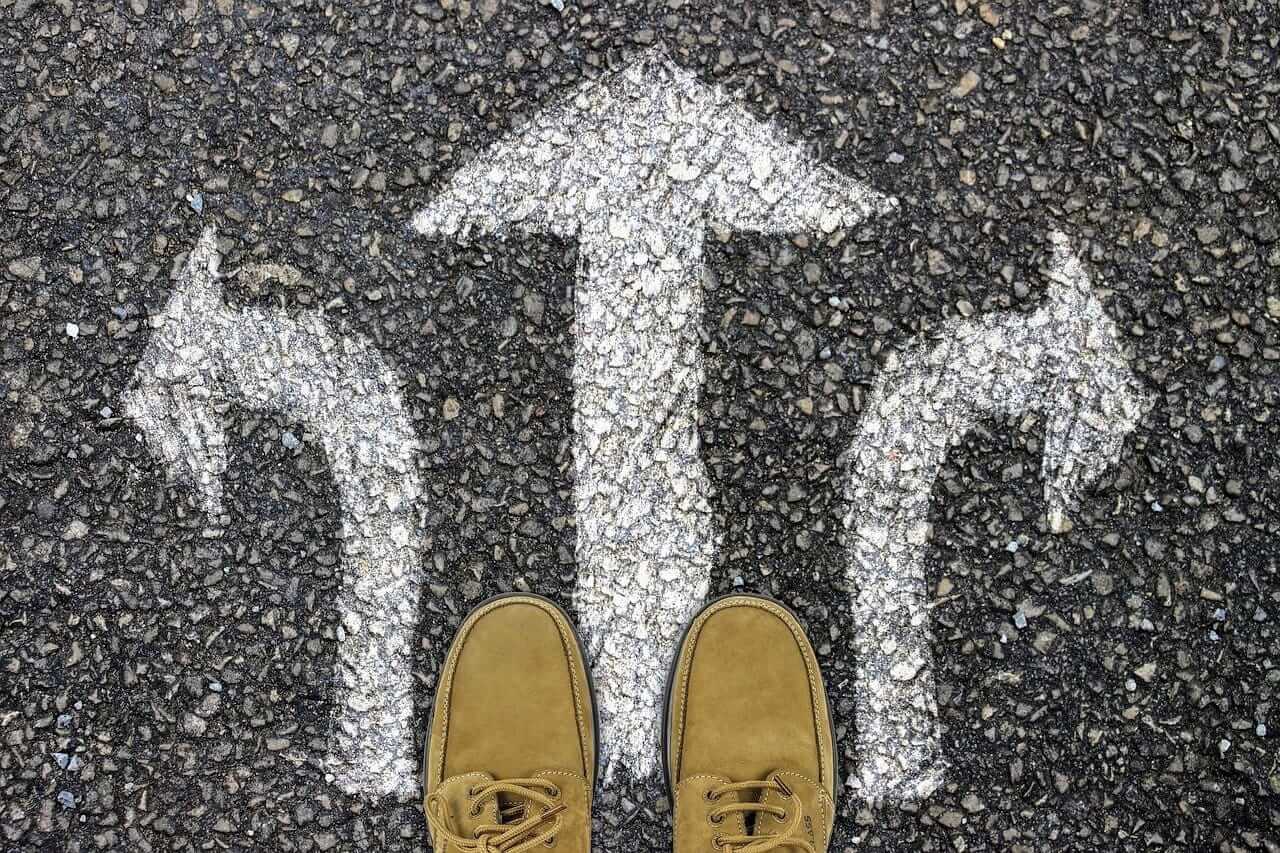Pursuing your goals is a choice. You decide for a goal and you decide to take certain actions. If you don’t decide, others will decide for you. And this means that others will take control of your life.
Too Many Choices
Let’s say your mission is to buy yogurt. You are in a supermarket, in front of a shelf with all kinds of yogurts. Which one should you buy? A more healthy one, a more delicious one or the one that is just cheaper? Does this sound familiar?
Not too long ago we had much lesser choices. If your dad was a farmer or a builder, chances were high that you became something similar. And, you remained working as a farmer or builder for your entire work life.
Today after high school or college you have so many choices, it is like standing in front of the yogurt shelf.
And if you start working today, chances are high that not only will you work in different companies but that you will work in completely different jobs in the course of your work life.
Why We Decide
We decide all the time. Decisions range from tiny ones like what kind of yogurt to have for breakfast to big ones, like whom to marry.
There are decisions that are triggered internally because we would like to improve ourselves or a certain situation. This is for example, if we decide to start our own business or to run a marathon. We decide to pursue a personal goal or we make decisions that help us to accomplish these goals.
Other decisions are more reactive and triggered by external situations or change. For example if we lose our job we quickly need to make a variety of decisions.
Your decisions determine what goals we choose and what steps we take.
How We Decide
There are various decision-making models available. A simplified version consists of the following steps.
- Identify the decision
We decide to decide. We need to define the goal or problem clearly.
- Gather information
We collect relevant information that can help us with the next two steps. We need to accept that there might be some level of uncertainty remaining.
- Identify or develop alternatives
In a decision (by definition) you have multiple choices. There might be more than the obvious choices available. So, try to think out of the box.
- Identify the best alternative
You go through your alternatives and identify your best choice. You can create a list and add all the pro’s and con’s (with certain weights) and / or you let your gut feeling help making the decision.
- Take action
You take action and implement what you have decided.
- Review your decision and the consequences
It might happen that you need to fine tune or reconsider your decision later. So, review your decision and the consequences at later stages.
Make The Right Decision
Now, you just need to make the right decisions. This is an illusion of course. You can just make the best decision that is possible for you in the very situation. If it is a big decision, think about it carefully, develop alternatives and take action. But, don’t overthink it.
Your values and priorities can help you with your decisions. Think about your big goals or life goals and try to align your decisions accordingly. You can make logic decisions or you can listen to your gut feeling.
In any case, a decision is better than no decision. If you do not decide, others will decide for you. If you decide too late, you might miss the chance. So, flipping a coin and then going ahead is better than deferring the decision for weeks, months or even years.
You made a wrong decision? That might happen and it will happen. It can be easy to recover from the wrong decision, for example if you bought the wrong yogurt just buy a new one. Or, it might have dramatic consequences, for example if you recognize you married the wrong partner. But making no decision at all can also have dramatic consequences. If you recognize you made a wrong decision, have the courage to correct it.
To un-decide, to change your mind or to admit a mistake can be hard. However, to keep walking the wrong path will be harder at the end.
You have to make tough decisions sometimes. You can train your decision muscle by actively making smaller decisions or changes.
Take Action
Now that you made a decision, you need to execute it. Unless circumstances or information change, stick to your decision and execute it as good as you can.
The first action you can take now is deciding to decide. Sometimes it is hard. But not deciding is much harder in the long run.
You have no choice? This is almost never the case. You have more control than you think. Go and do it. It is worth it.
